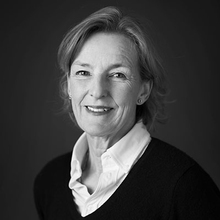Eugène Jansson
'Timmermansgatan' (Timmermansgatan)
Signed Eugène Jansson. Executed 1897, Canvas 109 x 62 cm.
Provenance
Consul General Josef Sachs, Stockholm: thence by descent within the family.
Literature
Nils G. Wollin, 'Eugène Janssons måleri', 1920, listed in the catalogue under the year 1897 as no 87 'Timmermansgatan' p. 175 ( Belonging to the Consul General J. Sachs, Stockholm).
More information
Eugène Jansson style of painting changed in the mid-1890s when he moved to the heights of Mariaberget on Södermalm, a small rural neighbourhood on the steep cliffs facing Riddarfjärden in Stockholm. He resided at several addresses; Timmermangatan, Bastugatan and Hornsgatan, and the different settings and views inspired him in his work. A turning point is the encounter with the work of Norwegian artist Edvard Munch, exhibiting for the first time in Stockholm. Eugène Jansson was deeply impressed by the bold and expressive style of Munch’s painting and this is the start of Jansson’s ‘blue period’ spanning 1890 to 1904. Influenced by Munch, Jansson made numerous paintings of Stockholm at dusk and dawn, lights reflecting in the water. Deserted streets and twilight views are dominated by a palette of deep blue and grey contributing to the deeply melancholy and symbolic mood.
The painting “Timmermansgatan” is a brilliant example of Jansson’s paintings from this period. The entrance to the stairs in the foreground directs the viewer’s gaze down the steps towards the abyss of the lower street. There is no sign of life in the foggy winter scene. Only the magical shimmer of the streetlights lining the path remind us of the eventual presence of human beings.
In 1904, Jansson produced what turned out to be his final view of Stockholm. ‘Österlånggatan’ (now at the Thiel Gallery, Stockholm), depicting a narrow street, then occupied by tradesmen in the heart of Gamla Stan. During the years that follow, Jansson systematically sought to retool himself as an artist, mastering the skills needed by a painter of nude male figures. He did not exhibit any of his new works until 1907.
Patrick Steorn, former director of the Thiel Gallery, describes Eugène Jansson: ‘Eugène Jansson became known as a person with a great interest in body culture, athletic and gymnastic exercises, outdoor swimming and sports. Regardless of whether the motif is the empty Österlånggatan or a study of nude males at the bathhouse, it is urban locations, activities and entertainment that are embodied in his art. The surfacing of a homosexual subculture is an important part of the urban landscape in early 20th century. Jansson's various motifs - dark streets and bathhouses - are connected in the way that they depict places where men interested in men could meet and make contact. From this perspective, the ‘blue-period’ Stockholm paintings can be seen as images of nocturnal strolling, where the emptiness of the streets also suggests a potential encounter. In this way, many of Jansson's paintings suggest a human presence, even though they are usually emptied of people.’
Eugène Jansson's biographer Inga Zachau writes the following about Jansson's use of a predominantly blue palette:
‘Eugène Jansson was the boldest colourist of the turn-of-the-century painters, expressive in his art, passionate, original and radical. While his peers in the 1890s painted nationally romantic depictions from their local regions of Sweden he remained in Stockholm, which was his homeland, the landscape where he discovered new motifs: the city at dusk and at night, painted in a colour scheme which includes all shades of blue. Eugène Jansson is the Stockholm painter above all others.’
































